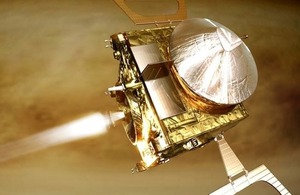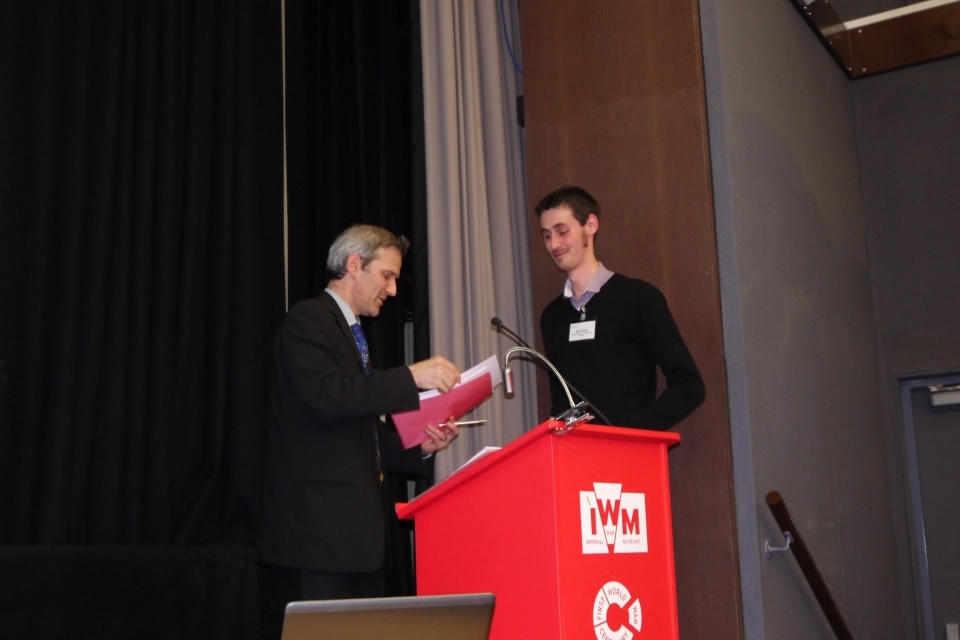UK Space Propulsion Competition fuels innovative new concepts
Finalists gathered for UK Space Propulsion Competition at the Imperial War Museum.

Venus Express orbit insertion. Credit: ESA - AOES Medialab.
Last week (18 March 2015) 13 finalists in the UK Space Propulsion Competition gathered at the Imperial War Museum to present their concepts for innovations in space propulsion systems.
The UK Space Agency offered an exploratory ideas grant of £10,000 as the first prize, Airbus Defence and Space contributed £7,500 as the second prize with SSTL funding £5,000 for third place.
The competition, launched October 2014, presented a number of space propulsion challenges for which participants’ were asked to provide a solution and evidence that the solution would work. Pitches had to be made in an 8 minute time limit, where the participants were judged on relevance, technological innovation, benefit and quality of deliverance. Participants had to be based in the UK and were allowed a maximum of 1 pitch per challenge. Prize money from the competition is to be used for the continuation of research.
Sam Hyde, AMRC Sheffield, won first prize with his mechanical spring operated permanent valve, in response to the Pyro Valve replacement challenge. Almost every space propulsion system includes a number of explosively activated safety valves that close off the main fuel supplies during launch or at the end of the launch phase. These safety valves traditionally use explosives which means that they are dangerous to assemble and impossible to test prior to launch. AMRC’s concept uses a spring and a piezoelectric release mechanism to solve some of these problems.

Space propulsion prize winner.
Sam Hyde, AMRC Sheffield, said:
Both myself and the AMRC’s Design and Prototyping Group are very pleased to receive this award. It represents the hard work of a number of us here at the DPG to make this project possible. We hope that this project is just the beginning of a much wider involvement between the AMRC and the UK space industry. Thank you again for the opportunity to participate in the competition, and the chance to bring our brand of innovation to the UK Space Agency.
Second place went to David Hemsley (Oxensis) and Charlie Ryan (Surrey Space Centre, University of Surrey). Their proposal was to expand on technology that Oxsensis has developed for measuring temperature and pressure in aircraft engines.
Third place went to Linas Karaveckas, a PhD student at Kingston University, for his piston pump proposal.